Water storage is essential to any household system, for general or emergency use. Your ability to access and clean water sources will assure you have the water your family needs in a disaster or on a regular basis. However, having just bottled water in your home is not efficient.
While the standard is 1 gallon per person per day, in reality you would need about 3 if you factor in things like cooking and cleaning and probably much more if you have a garden that needs watering, which is a standard for homesteaders.
To store 3 gallons of water per person per day for a month would be 360 gallons each month for a family of four! A 24 pack of 16oz water bottles is only gonna be about 3 gallons of water total. Simple math dictates that you are gonna need 120 cases of water, for a family of four, each month! Where does all that go?
Therefore, lots of people set up 55-gallon rain barrels on their downspouts to harvest rainwater. These are 55 gallons per clip and can be used for everything from drinking to washing to cooking. Of course, nothing is perfect so there are some pitfalls you need to avoid when harvesting rainwater.
Let’s look at 7 mistakes to avoid when harvesting rainwater.
Construction
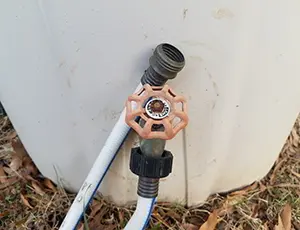 My earliest rain barrels were just sad. They always leaked. They would be full after a rainstorm and then hours later the water level would be down below my poorly constructed spigot. If you have or make poorly constructed rain barrels it is going to defeat the purpose.
My earliest rain barrels were just sad. They always leaked. They would be full after a rainstorm and then hours later the water level would be down below my poorly constructed spigot. If you have or make poorly constructed rain barrels it is going to defeat the purpose.
You need a way to cut these barrels effectively and a waterproof adhesive to keep the spigots in place. If you cut a jagged hole it will be harder to seal the spigot in without leaks. Take your time and do it right the first time.
Overflow
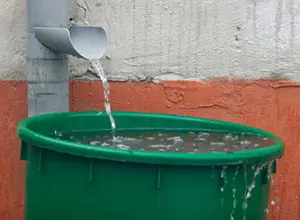 You are probably accustomed to seeing a spigot on the bottom of the rain barrel. This is where you hook up the hose to gain easy access to your stored water. You should also place another spigot a few inches from the top of your rain barrel. This will become on your overflow spigot.
You are probably accustomed to seeing a spigot on the bottom of the rain barrel. This is where you hook up the hose to gain easy access to your stored water. You should also place another spigot a few inches from the top of your rain barrel. This will become on your overflow spigot.
The overflow spigot should be tilted upward when installed to allow for a slow release of water that is above this fill line. You don’t want a bunch of water spilling over the edge of your rain barrel and settling around your home’s foundation.
The overflow allows your barrel to stay full but not expose your foundation to a massive overflow so easily.
Screening
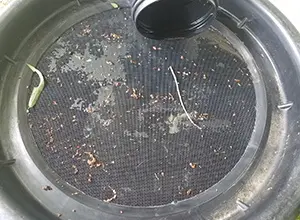 Mosquitoes are the worst. If you really want some bad mosquitoes the best thing to do is create a 55-gallon mosquito larvae farm to terrorize you and your family. Without a fine screen these little blood suckers will be popping out of the surface of your rain barrels and they will be hungry
Mosquitoes are the worst. If you really want some bad mosquitoes the best thing to do is create a 55-gallon mosquito larvae farm to terrorize you and your family. Without a fine screen these little blood suckers will be popping out of the surface of your rain barrels and they will be hungry
The screen will also keep your water free of debris that could blow in during a storm or make it down the gutters. Screen is cheap and easy to work with. Just cut it a little larger than the mouth of the rain barrel and use a large rubber band to secure it.
I use a screen and I add a few capfuls of bleach to my rainwater, too! This will kill off those pesky mosquito larvae.
Gutters
 Not all mistakes happen at the rain barrel level. Harvesting rainwater also involves your roof and your gutters. If your gutters are full of debris it could limit your rain harvesting capabilities, it could allow sticks and other debris to damage your rain barrel screen. Your water will also filter through all kinds of foliage that you might not want in your drinking water.
Not all mistakes happen at the rain barrel level. Harvesting rainwater also involves your roof and your gutters. If your gutters are full of debris it could limit your rain harvesting capabilities, it could allow sticks and other debris to damage your rain barrel screen. Your water will also filter through all kinds of foliage that you might not want in your drinking water.
Gutter guards or consistent cleaning will assure you have clean water and a fully operational rain harvesting system.
Sanitization
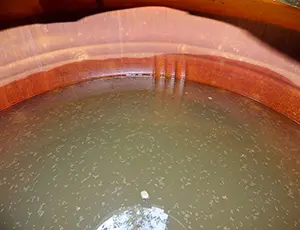 No matter where you live or how you harvest the rainwater be sure that you treat it. It should be filtered and sanitized by boiling or the use of bleach to kill any bacteria or parasites. Never assume your water is safe to drink.
No matter where you live or how you harvest the rainwater be sure that you treat it. It should be filtered and sanitized by boiling or the use of bleach to kill any bacteria or parasites. Never assume your water is safe to drink.
If you drink water directly from your rain barrel you run the risk of contracting waterborne illnesses that will require you to use up much more water and resources to recover.
There are some pressurized jerry cans on the market and they are a great tool for this. The jerry can fills to about 4 gallons of water and the included filter is good to roughly 10,000 gallons! Buy some unscented bleach and store it for a number or uses, water sanitization included.
Origin
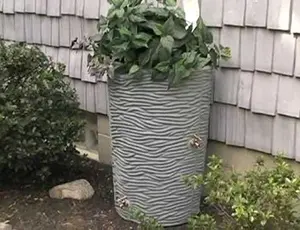 Not every barrel is appropriate for harvesting rainwater. Lots of barrels hold dangerous, flammable, or poisonous materials before they wind up emptied out and considered as a potential rain barrel. If your family will be drinking out of these barrels you want to be sure they cleaned, food grade barrels. Settle for nothing less.
Not every barrel is appropriate for harvesting rainwater. Lots of barrels hold dangerous, flammable, or poisonous materials before they wind up emptied out and considered as a potential rain barrel. If your family will be drinking out of these barrels you want to be sure they cleaned, food grade barrels. Settle for nothing less.
If you have money to throw at this problem of procuring rain barrels to harvest rainwater, there are some great premade options out there. You can buy decorative barrels, or you can buy barrels that have little grow areas on top of them. There is cool stuff out there
Local Regulations
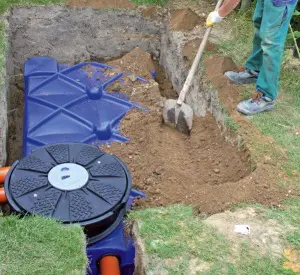 This is where things get interesting. Some people aren’t happy with the idea of you harvesting rainwater. Some local governments claim they own the water that falls out of the sky and even create laws to keep you from having and using a rain barrel.
This is where things get interesting. Some people aren’t happy with the idea of you harvesting rainwater. Some local governments claim they own the water that falls out of the sky and even create laws to keep you from having and using a rain barrel.
If you find yourself in this situation you have two options:
- Don’t harvest rainwater
- Establish a cover rainwater harvesting system.
Now, number 2 might sound like a complicated ordeal. However, a cover rainwater collection system is not that tough to accomplish. You are going to have more work to do than the average person and it’s gonna cost you more…
Rain barrels can be buried, and a simple pump can be used to fill buckets or containers. Rain barrels can be well concealed in the backyard of a home with something as simple as a fig tree. Foliage will cover these barrels and only those searching for them would know they exist.
Be a good neighbor, too! Most of these infractions are reported by neighbors.
3rd option: Move away from the crazy place that thinks it owns the water.
Related: How to “Winterize” Your Pipes and Prevent Damage
Water is essential and it’s a rare resource that you will die without in a short time. Our hyper convenient lifestyle means that we disregard the infinite source of water that runs through our home. If an emergency cuts that off, life gets vastly different in a hurry.
From hygiene to hydration emergency water storage is key to surviving any possible scenario. The population will suffer from something like ‘water shock’ when they realize there could be nothing coming out of the tap.
I don’t recommend storing all your water indoors. Use rain barrels to harvest rainwater because, for most of us, its cheap and easy. Be sure you have filters and sanitation methods for water, include a little bottled and stored water for convenience. Avoid the 7 mistakes we mentioned, and you will be prepared for a water emergency.
You may also like:
Arizona Farmer Accidentally Discovers Trick To Turn Air Into Water (Video)
DIY Stove Made From Used Tire Rims
Homesteading After 60: What You Need To Know
Urbanites Moving To Rural Paradise Ruining It For The Locals

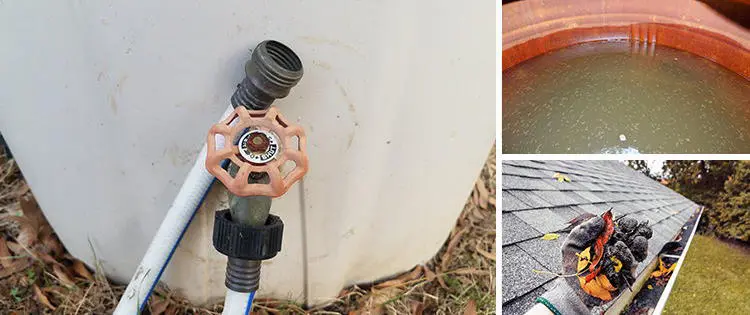
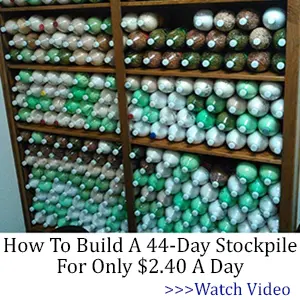








If you live in an arid area and everyone has rain barrels – what happens to the aquifers?
If you compare the surface area of the surrounding land versus the surface areas of the roofs where the water is being collected, it will most likely be fractionally insignificant.
I bucket out the water from my rain barrels and put it on the plants in my garden. The plants use their share and the rest returns to the aquifer through the ground. How is this different from my purchasing water from the city that they pump out of the aquifer?